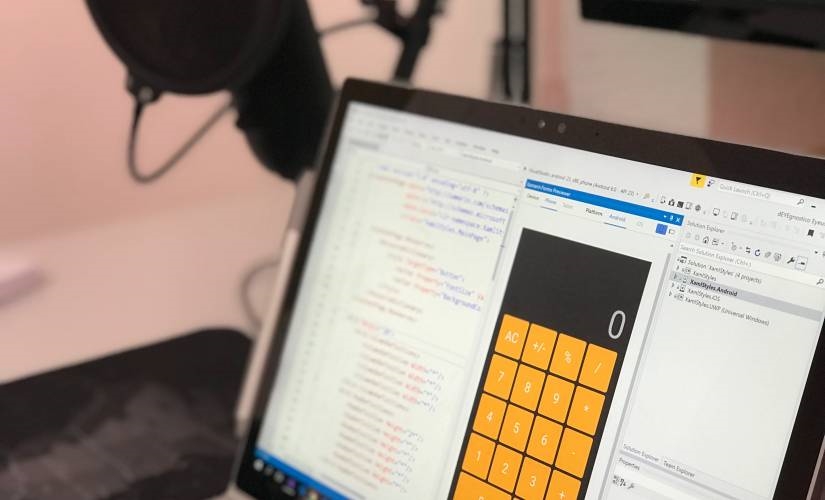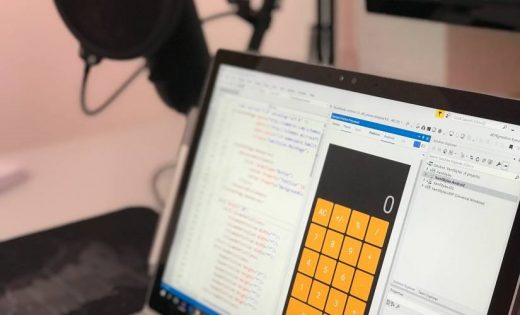Flutter App Development – A Revolutionary Step in Mobile SDKs
Flutter App Development – A Revolutionary Step in Mobile SDKs

Google’s latest kid on the mobile app development block is Flutter, an open-source mobile application development framework launched in May 2017. This Google alpha emerged through five previews. The first stable version Flutter 1.0 released in December 2018. Flutter is a Software Development Kit (SDK) that enables developers to write mobile applications for both Android and iOS platforms using a single code and eliminates the dilemma of choosing between apps if on a limited budget.
So, what’s so interesting about it?
Android Studio and Xcode required developers to create two different versions of apps for Android and iOS – one using Java or Kotlin, while the other with Objective-C or Swift. SDK. Flutter is a cross-platform SDK that doesn’t require writing different codes for different apps. Flutter’s complete package of framework, widgets, and tools enables enhanced, efficient, and visually-stunning apps.
Application Development Has Time Saving Features
Dart Programming
Flutter works on Dart programming, which can also be integrated with Java and Swift for Android and iOS, respectively. The integration eliminates the process of rewriting existing applications if developers want to start using Flutter. Compilation of Dart with Java can create web applications. However, it is not compulsory to integrate Dart with Java. It has a broader scope of developing interfaces, collections, etc.
Dart language is built on two main components: Ahead of Time compiler (AOT) and Just in Time ompiler (JIT). AOT support helps in improving startup time and app performance while JIT helps in faster loading of source codes. Additionally, JIT compiles with ARM for 32-bit and 64-bit. To run natively, both Android and Apple platform mobile apps are written in Dart.
Hot Reload
Hot Reload is an exciting feature that is capable of administering updated code into an already running machine. Mobile app testing requires introducing updated source codes to find out which code works the best. Earlier tools like Android Studio take a lot of time to inject new code while the application is running. Hot Reload can save precious amount of time, enabling the developers to see their changes within a second. Also, developers can recreate the desired effects without changing the state of an application. “Stateful Hot Reload” feature helps in tweaking the apps on a real-time basis. Apart from that, there is no need to enter login details while entering new code. Google has also claimed that such a feature has increased the productivity of development cycle three times.
Skia 2D
Flutter works on Skia 2D graphics engine that enables rendering of the graphics without any glitches. Plus, Flutter runs according to the device’s native speed. Apart from building amazing apps, you can control every pixel in front of you with its brilliant composition. It allows you to build graphic animation, control over video, text, etc.
What’s New in the Stable Channel Flutter 1.0
Flutter 1.0 is the first stable channel, which means it has minor updates compared to its master, beta, or dev channels. Since the launch of the first version, around 20 distinct Firebase support services are added. Flutter apps have also seen a reduction in their sizes. Flutter 1.0 integrates with Dart 2.1. Dart 2.1 works in comparatively smaller codes. It also has improved type checks, errors, and new enhancements for enhancing user experiences.
Add to App
Add to App is a feature helpful for flutter app developers who are unable to build a new app altogether. It makes the sharing of assets between the original source code and Flutter. Moreover, it is now feasible to attach a Flutter process that already exists without launching debugger.
Platform Views
Platform Views enables an embedded control in a Flutter app with widgets like UiKitView and AndroidView. UiKitView and AndroidView are built with a composition model. The host content can be easily integrated with Flutter (and other) content with the help of these widgets. Flutter doesn’t rely on web view or even OEM widgets. It has its own rendering engine that renders each viewable component effortlessly. Also, there are immense improvements in Material Design (Android), and Cupertino (iOS) widget sets to enhance the user interface. (UI).
Rendering engines have the power and ability to produce applications with a performance which blends with the native device. So, C/C + + code blends with NDK and LLVM on Android and iOS, respectively. The widgets render the visuals to Skia canvas and send them to the platform. Flutter works on a shell specifically designed for the concerned platform that hosts Dart Virtual Machine inside it. It allows easy access to program interfaces (APIs) and a proper flow of interaction between the shell and relevant inputs (IMEs).
Framework
Cross-platform frameworks require a direct flow of communication between native services. Hybrid applications are based on Webviews, which are simply browsers embedded in an application to render HTML.
Earlier frameworks like Cordova, Apache, PhoneGap were based on either Java Script or Webviews. However, the communication between Javascript and native services of devices was a little awkward. It required building a bridge to switch contexts between both realms. Flutter development came up with an advanced solution eliminating the use of that “bridge.” Dart’s AOT is a compiled programming language that enables easier communication to the native services. AOT compilers help with improved performance and faster startups.
Winding Up
Flutter is a revolutionary step in the future of app development. It is the only mobile software development kit providing reactive views without creating a bridge between Java and native code. There are many application development solutions and other mobile app development services for all your application needs. Mobile app developers need to check this out to deliver scintillating apps in less time with a single code base for both Android and iOS apps.
The post Flutter App Development – A Revolutionary Step in Mobile SDKs appeared first on ReadWrite.
(46)


